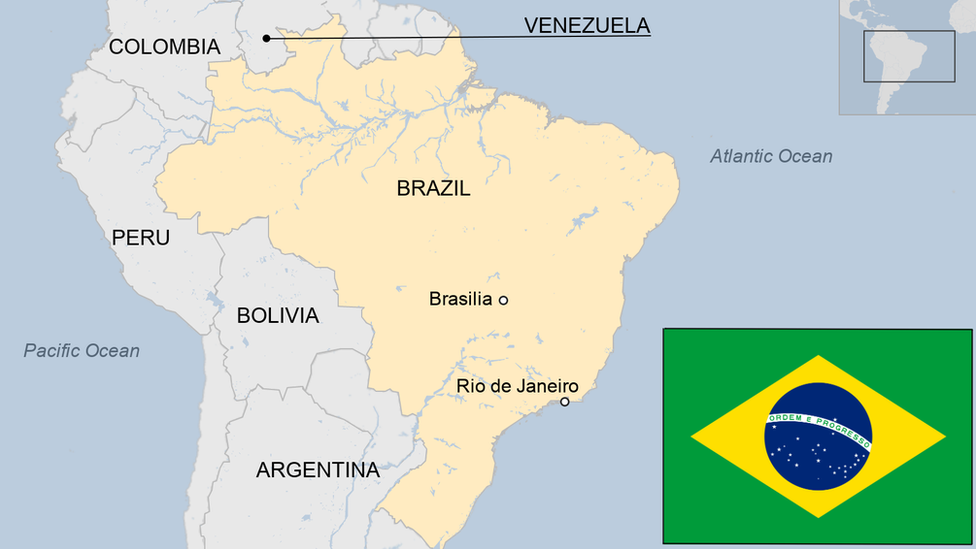Could Brazil's club fire have been avoided?
- Published
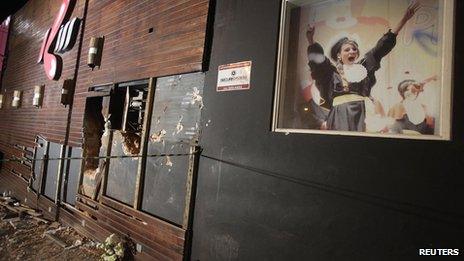
Overcrowding, lack of oversight, poor layout and the use of pyrotechnics are some of the elements that are reported to have contributed to the tragedy at the Kiss nightclub in Santa Maria on Sunday morning.
Famous for its university parties, the club was a meeting point for students and apparently had a capacity of 2,000 people.
But in the wake of Sunday's deadly fire, questions have been raised about the club's operating licence.
Police said it was in the process of being renewed, but it was not clear if it was illegal for the business to be open.
According to Col Humberto Viana of the National Civil Defense (the federal emergency authorities), the club did not have a fire safety certificate, which expired in August 2012. However, the venue was allowed to operate until a new inspection was carried out.
The certificate is issued by the local fire department, based on an inspection, during which the agency checks that the venue complies with current regulations, and has fire extinguishers, and proper exits and emergency lighting.
Experts told BBC Brasil that to keep a venue open with an expired permit increased the risks to patrons.
"There were reports, for example, that the fire extinguishers did not work. In this kind of tragedy, there are always situations so obvious they end up being neglected," Carlos Wengrover, engineer and co-ordinator of the committee for fire safety in Rio Grande do South, said.
"We need to know if the building fulfilled to the letter the rules determined by the Brazilian Association of Technical Standards (ABNT), for example, the existence of emergency lighting," he added.
Possible overcrowding
The club is reported to have had a maximum capacity of 2,000 people, but no-one knows for sure how many people were inside at the time of the fire.
However, BBC Brasil spoke to experts who said 1,300 people ought to have have been the maximum permitted capacity of the building, based on the club's floor area of 650 square metres (7,000 square feet).
The estimate is based on having two people per square metre, and takes into account limits on the number of people in venues like nightclubs, according to ABNT rules.
However, city authorities and the fire departments across the country often do not have enough people to carry out the required inspections, experts say.
"In all those tragedies, the common denominator is that… rules are not being followed. The local authorities and firefighters must work together to carry out thorough inspection work," Luiz Antonio Cosenza, president of the Committee for Analysis and Accident Prevention at the Regional Council of Engineering and Agronomy of Rio de Janeiro (RJ-Crea), told BBC Brasil.
Inspections help to reduce the number of accidents, said Mr Cosenza. Last year alone, about 90% of all accidents related to construction in Rio de Janeiro were caused by lack of maintenance, he said.
"It is up to the local bodies to issue bans in case of violation of the law, as well as to the owner and the tenant responsible for any risk that the establishment may present," he said.
Possible structural deficiencies
Former banker Alberto Tessmer, who was at the club and helped to rescue the victims, said there was only one way out of the club, the same which was used by the public to enter the building, he told BBC Brasil.
And there was no emergency lighting to show the quickest escape route, he added.
Mr Tessmer also said many people thought a door inside the nightclub, which gave access to the loos, was a possible emergency exit.
In an interview with the Folha de Sao Paulo newspaper, Captain Edi Paul Garcia, of the military police, said he had taken some "180 bodies of victims" out of the bathrooms.
"If there was really only one emergency exit [in the Kiss nightclub], why was this venue allowed to operate?" said Ivan Ricardo Fernandes, civil engineer and captain of the fire department of Parana, a neighbouring state.
Mr Fernandes says that "considering the size and the activity at the venue, two emergency exits would have been required, which together should add up to seven metres wide".
"And according to ABNT rules, the maximum distance to be travelled to the emergency exit should be 30 metres," he added.
According to eyewitnesses, the only exit was two metres wide by two metres high.
Use of pyrotechnics
Witnesses have said that one member of the band Gurizada Fandangueira, which appeared at the club in the early hours of Sunday morning, lit pyrotechnics during the performance.
Sparks apparently hit the soundproofing material on the ceiling which triggered the blaze, which quickly got out of control.
Such fireworks are common in bands' stage shows.
"However, the owners of the nightclub or party organisers should have given permission for this to happen, which given the space, should have been prohibited," said Mr Wengrover.
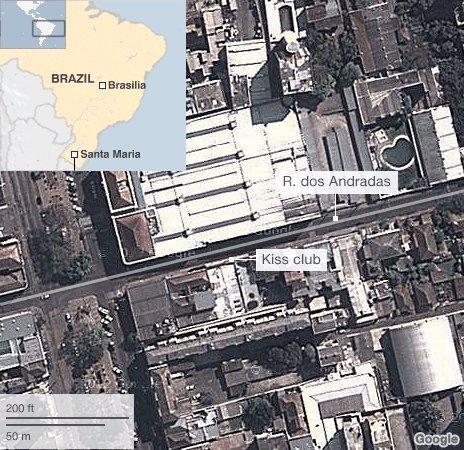
- Published28 January 2013
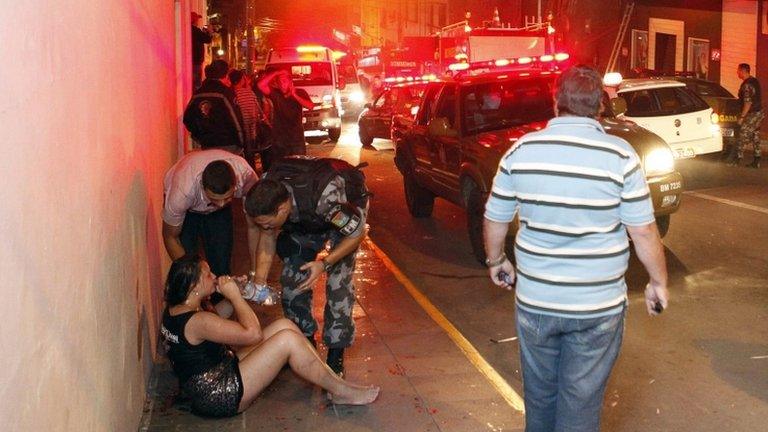
- Published27 January 2013
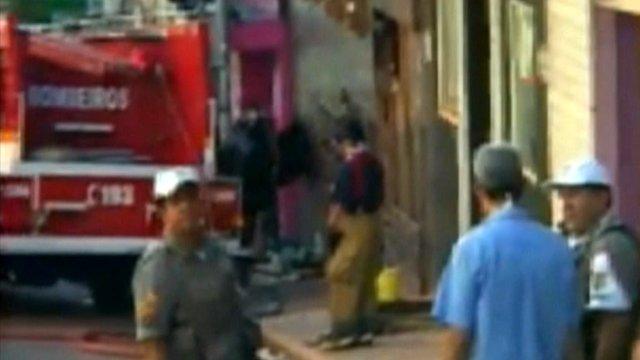
- Published2 June 2023
